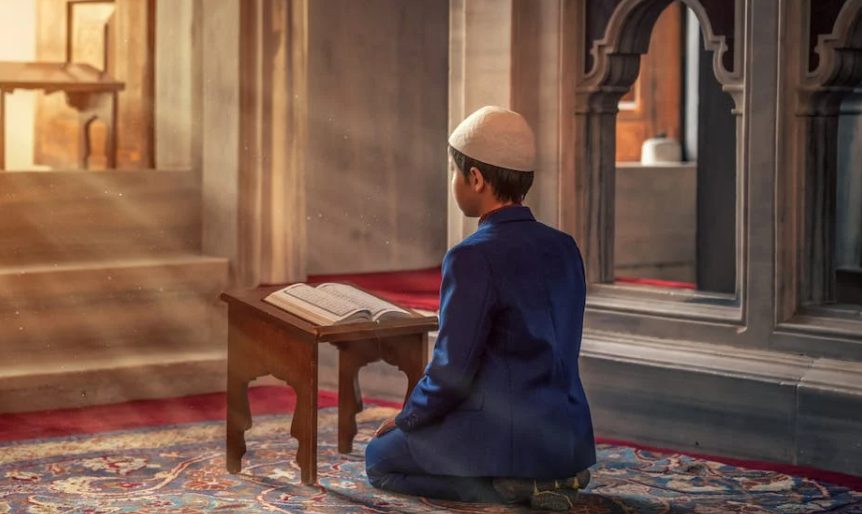Meditation Vs Prayer
Learn the difference between meditation and prayer and how it teaches a childlike submission to God.

Selfpause Affirmation App
Download the app to get 1,000’s of affirmation meditations and everything you need to write, record and listen to your own.
The main difference between meditation and prayer is that the latter focuses on communication with God, while the former focuses on listening to one’s own thoughts as if one is a spectator. While praying, one speaks to God out loud or in the heart. In contrast, meditation teaches a childlike submission to God. In addition, meditation involves quieting the mind and soothing the limbic system.
Meditation is not contemplation

There is a huge difference between meditation and contemplation in prayer. Though the two terms are often used interchangeably, they are not the same. The difference lies in how the two modes of prayer are practiced. The former is more of a mental state, whereas the latter is more of an emotional state.
In religious terms, meditation is a kind of deep thought. Contemplation is the act of gazing wordlessly at the face of Christ while feeling the presence of love. In Christian terms, contemplation involves an emotional awareness of love. Both have their benefits. However, the two terms should not be confused.
A contemplative prayer is a very personal and intimate act. It involves sharing your heart’s feelings and emotions with the one you love. It involves revealing life’s experiences, unburdening oneself, and sharing hopes and aspirations. The aim of such a process is to reach a divine union. It also changes how you think about the world, the self, and the relationship between you and God.
In Christian tradition, contemplative prayer has been around since the early centuries. It was associated with monasticism in the medieval era. However, in recent times, it has been reclaimed as a normal and important part of the spiritual journey. There are many Christian organizations that encourage contemplative prayer. For example, Julian Meetings is a network of groups fostering contemplative prayer in the Christian tradition. The Retreat Association also produces a leaflet listing contemplative prayer networks. While contemplative prayer and meditation are often confused, they are different methods of being open to God and obtaining his/her guidance.
The Buddhist school of meditation emphasizes sensory deprivation and direct communion with God. Several of these gurus were responsible for founding Western Monasticism. Their mystical experiences are known as ‘the god within’. This “god” is not the God of the Bible, but a darker and more mysterious entity that manifests itself in a mystical way.
It teaches childlike submission to God

Meditation is a process of becoming childlike in our relationship with God. It involves recognizing that God is greater than the world and that we can’t please God by speaking or listening from our own perspective. It can be challenging to do on a regular basis, but the practice of meditation can provide a path to true peace.
Children and youth can learn to pray and meditate easily. These practices help them develop a childlike attitude toward God and to others. However, this type of submission does not necessarily require a capitulation attitude. Instead, it simply involves sitting in God’s presence and listening to what He has to say.
It calms the limbic system

Meditation and prayer both aim to calm the limbic system and provide relief from stress. The limbic system is the part of the brain responsible for the fight-or-flight response and is often over-active in stressful situations. During stressful situations, it pushes a person into a state of survival mode, which forces the person to flee the situation. Meditation, on the other hand, calms the limbic system and helps the person to rationally choose a solution to a problem.
The limbic system is an ancient part of the brain that is present in humans and lower animals. Its functions are instinctual and associated with survival, including basic primitive emotions. It is also responsible for many of our animal instincts, including how to nurse our young and protect ourselves. Brain scans have shown that when we get angry, cells in our limbic system fire wildly. It has also been linked to some common fears, including fear of heights.
It quiets the mind

Meditation and prayer are both methods of quieting the mind, but they differ in terms of how they accomplish this. Prayer involves talking to a higher power while meditation involves coming back to the present moment. Both practices require the mind to be quiet and honest. However, each has its own benefits.
One of the best ways to meditate is to pick a scripture that is meaningful to you and focus on it during your time of quieting the mind. It’s helpful to choose scriptures that speak of the goodness and promise of God. It’s also helpful to focus on the concept of worshipping God.
It can lead to an ever-expanding ego

The ego is an extremely powerful tool and, once trained, will often take over our life. The content of our mind, the forms we identify with, and the ever-changing thoughts we have create our sense of self. It is possible to meditate and still be self-absorbed, but this is not helpful for your ego. The core of the ego is negative thoughts. Eighty-nine percent of our mental-emotional activity is dominated by these thoughts.
The ego is fueled by fear and will try to install this fear into every area of our lives. It will also try to manipulate us by making us feel anger, jealousy, lust, and greed. It will know our weaknesses, repressed desires, and denials, and use them against us in an effort to knock us off the path of enlightenment.
The ego thrives on labels, stories, and problems. It never wants these things to end, because they give it a false sense of identity. It is when the ego is ready to let go of this victim story that it becomes free of resistance. It is not helpful to focus on negative thoughts because these are designed to feed the ego’s false sense of self.
Ultimately, we must learn to watch our mental-emotional reactions in meditation. By becoming aware of these reactions, we will gain a deeper awareness of the Ego and its workings. This awareness is essential for awakening. As we gain awareness, we will become able to transcend the Ego’s dominion over our life.
In the first three stages of life, the egoic self emerges. Meditation can be effective in this stage of life, but we must remember that it is not the same as self-death. A healthy and balanced ego can be a very effective tool in meditation and spirituality.
Our Top FAQ's
Some of the main differences between meditation and prayer are the way they are practiced and the goals they aim to achieve. Meditation is typically a more inward-focused practice that involves quieting the mind and paying attention to the present moment, often through techniques like breath control and mindfulness. Prayer, on the other hand, is a form of communication with a higher power or spiritual entity, and may involve speaking or singing aloud, silently reciting words, or simply having a dialogue with God or a higher power.
Both meditation and prayer have been shown to have potential benefits for physical and mental health, including reduced stress and anxiety, improved focus and concentration, and a sense of calm and well-being. Some research suggests that regular practice of meditation and prayer can also have positive effects on the immune system and cardiovascular health.
In terms of their approach to spirituality, meditation and prayer can be seen as quite different. Meditation is often seen as a secular or non-religious practice that is focused on personal growth and self-improvement, while prayer is typically associated with a specific religious or spiritual tradition and is seen as a way of connecting with a higher power.
Meditation and prayer can definitely be practiced together, and many people find that combining the two practices can be a powerful and enriching experience. Some religious and spiritual traditions even incorporate elements of both meditation and prayer into their daily practices. However, it is important to note that meditation and prayer are not necessarily incompatible, and some people may find that one practice is more effective for them than the other.
Different religions and spiritual traditions approach meditation and prayer in different ways. In some traditions, such as Hinduism and Buddhism, meditation is seen as a central part of spiritual practice and is used to cultivate inner peace and enlightenment. In other traditions, such as Christianity and Islam, prayer is seen as the primary means of communication with God and is often an integral part of daily life. Some traditions may combine elements of both meditation and prayer, while others may place more emphasis on one practice over the other.
